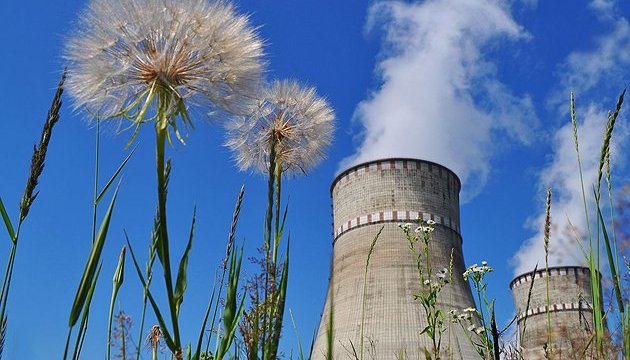УДК 553.49:550.42 • Issue 2 (30) / 2019 • 106-118 pages
Fomin Yu.O., Demikhov Yu.M., Verkhovtsev V.G., Dudar T.V.
Fomin Yu.O., PhD (Geol.-Min.). Leading Researcher. SI “Institute of Environmental Geochemistry of NAS of Ukraine”, yaf1941@gmail.com
Demikhov Yu.M., PhD (Geol.-Min.), Laboratory Head, SI “Institute of Environmental Geochemistry of NAS of Ukraine”, y_demikhov@ukr.net
Verkhovtsev V.G., D. Sc. (Geol.), Depart. Head, SI “Institute of Environmental Geochemistry of NAS of Ukraine, Verkhovtsev@ukr.net
Dudar T.V. (Geol.-Min.). Senior Researcher. SI “Institute of Environmental Geochemistry of NAS of Ukraine”, tamadudar@ukr.net
Abstract
The article deals with the forms of trace elements occurrence that accompany uranium mineralization. They can be both: the concentrators themselves and common rock-forming minerals. The first include the native metals – gold, bismuth, lead; sulfides of Cu, Zn, Pb, Ni, Co; monazite (Th), zircon (Zr, Th). Examples of the second group are feldspar, rubidium, strontium, and lead; aegirine, riebeckite, sphene and vanadium. Trace elements were considered according to the following system: radioactive, siderophilic, chalcophilic, rare and rare earth elements, as well as elements-mineralizers within the studied albitite uranium deposits. Four forms of uranium are found in albitite deposit systems. These are (1) uranium minerals; (2) highly radioactive accessory minerals; (3) uranium scattered in rock and ore-forming minerals; (4) uranium mobilized (sorbed) by secondary minerals. The highest mobility of metals is recorded in the ground and surface waters, as well as in soils and upper parts of the weathering crust. Uranium turned out to be the most mobile of the radioactive metals (the widest secondary aureole), radium is concentrated closer to primary uranium ores, and thorium associated with monazite is relatively stable. Taking into account geological and geochemical characteristics of albitite deposits, as well as landscape and geochemical features of the Ingulskyi megablock (transition between forest-steppe and steppe zones), the region seems very promising for the formation of surface concentrations of uranium and accompanying elements (V, Cu, Zn, Zn Mo, Pb). All described constituents of ore mass of albitite formation deposits, except for directly uranium minerals, can be considered as uranium mining tailings that have been (and will be) accumulated. In essence, it is grinded mineral concentrate enriched in uranium and impurities described and placed under conditions of hypergenic processes favorable for oxidation and decomposition. The removal of metals (in most cases toxic ones) by atmospheric waters into hydrographic network, their subsequent migration into the groundwater system, gradual penetration into soils and biological objects is obviously can be forecasted.
Key words: elements, accompanying uranium mineralization, uranium albitites, albitite formation, form of occurrence of uranium mineralization, metals mobility.
Article
Reference
- Fomin Yu.О., Demikhov Yu.M., Verkhovtsev V.G. et al. (2019). Trace elements of the uranium ore mineralization from albitite formation of Ukrainian Shield and their impact on the environment.
- Belevtsev, Ya.N. et al. (1995). Genetic types and regularities in placement of uranium deposits of Ukraine. In: Belevtsev, Ya.N., Koval, V.B. (Eds.), Naukova Dumka. Kyiv. UA. 396 p.
- Belevtsev, Ya.N. et al. (1968). Principles of formation and distribution of uranium deposits of Ukraine . In: Belevtsev, Ya.N. (Eds.). Kyiv. 763 p.
- Fomin Yu.O., Demikhov Yu.M., Sushchuk K.G. (2010). The system of uranium albitites as a potential source of surface deposits of uranium and /or technological hazards. Geochemistry and Ecology. Kyiv. V. 18. pp. 31- 49.
- Mineeva I.G. (1986). Mineralogical and geochemical aspects of Precambrian uraniferous albitites formation// Sov. Geology. № 3. pp. 87-93.
- Fomin Yu.О. (2013). Thorium in uranium albitites of the Kirovogradskyi megablock. Coll. Sciences. Proceedings of Institute of Environmental Geochemistry, NAS of Ukraine. 22. pp. 144-160.
- Turovskyi S.D., Abakirov Sh.A. (1975). To geochemistry of thorium in hydrothermal process. Radioactive elements in rocks: Nauka. pp. 166-171.
- Shnyukov Ye.F., Kulish Ye.A., Orlovskii G.N. et al. (2009). Vanadium in rocks and ores of Ukraine. Kyiv. OMGOR, 216 p.
- Fomin Yu.О. (2012). Behavior of vanadium in the processes of formation and destruction of uranium albitites deposits of the Ukrainian shield. Geochemistry and Ecology. Kyiv. V. 20. pp. 59-75.
- Melnichenko B.F., Sinitsyn V.A., Koval V.B. (1994). Metasomatites of the Zheltorechenskoe vanadium–scandium deposit// Reports of the Academy of Sciences of Ukraine. № 3. pp. 117-122.
- Fomin Yu.О., Kuzenko S.V. (1988). Cobalt and nickel in pyrite as indicator of conditions for formation of Precambrian sodium–carbonate metasomatites// Reports of the Academy of Sciences of Ukraine. – Series B. – № 5. pp. 23-25.
- Fomin Yu.О., Demikhov Yu.M. (2010). Sulfur in the process of evolution of uranium deposits of albitite formation, Kirovogradskii megablock. Prospecting and Environmental Geochemistry. – Kyiv. № 1 (10). pp. 71-81.
- Fomin Yu.О., Ivanov A.S. (1995). Thorium-rare-earth mineralization in Archean gold-ferruginous ores of the Balka Shirokaya (Middle Dnieper granite-greenstone region)// Reports of the Academy of Sciences of Ukraine. pp. 101-105.
- Mitskevich B.F., Sushchik Yu.Ya. Samchuk A.I. (1984). Physical and chemical conditions for the formation of exogenous aureoles and dispersion trains of beryllium. Kyiv. Nauk. Dumka. 176 p.
- Geochemistry, mineralogy and genetic types of deposits of rare elements (1964). V. 1. Moscow, Nauka, 686 p.
- Usenko I.S., Rokachuk T.A., Kramarenko N.K. et al. (1980). Alkaline feldspars of granitoids of the Ukrainian shield. Kyiv. Nauk. Dumka. 196 p.
- Wolfson F.I., Druzhinin A.V. (1975). The main types of ore deposits. Moscow. Nedra. 392 p.
